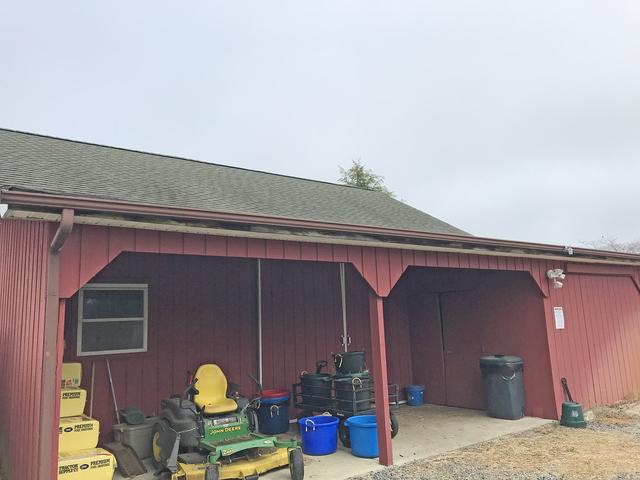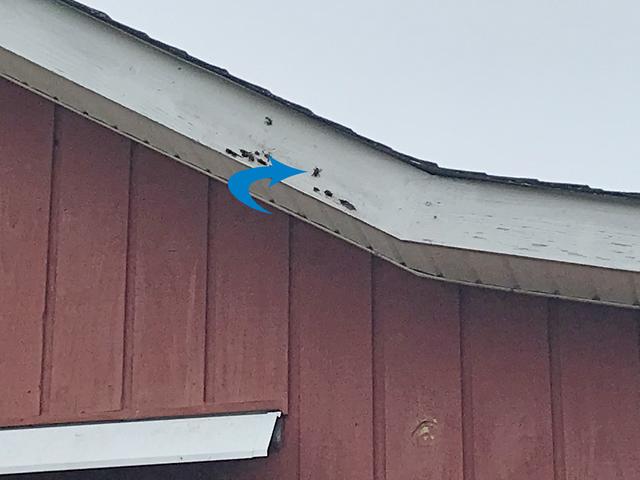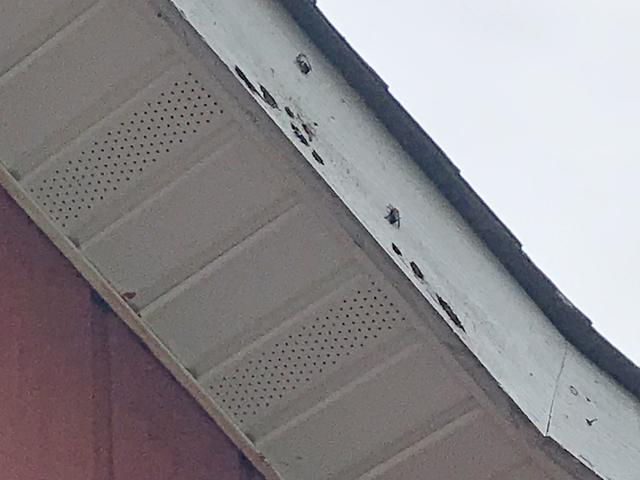Carpenter Bees in the Barn in New Egypt, NJ
Challenge
Recently, I went out on a service call for a homeowner in New Egypt, NJ, after he discovered bees buzzing around his barn. Adult carpenter bees overwinter in abandoned nest tunnels where they have stored pollen to survive the winter. Those hardy bees that make it emerge in the spring to collect pollen and nectar from their preferred plants, mate, and build galleries. In addition to carpenter bees, the two other bees often encountered by homeowners are honey bees, which are essential pollinators, and bumblebees. Carpenter bees are wood-boring insects that can cause significant property damage. Their larvae also attract woodpeckers that cause even more damage to the structure.
As I began my inspection in the barn, I immediately noticed several bees boring into the wooden trim by the soffit. I identified them as carpenter bees. Carpenter bees are often mistaken for bumblebees since they are similar in both size and appearance. However, unlike bumblebees, they are not social insects that live in colonies. They are solitary insects. Carpenter bees have hairless abdomens that are shiny black. Each female constructs her nest by boring holes into trees or wooden frame buildings. Once a carpenter bee makes a gallery in your home, barn, or shed, they will continue to use and expand the same gallery year after year. If you see a number of large bees hovering near the eaves of your house or drilling in wood, it is a safe bet that you have a carpenter bee infestation.
Solution
The most effective treatment method for carpenter bees is to inject the galleries with a direct-contact dust residual. This application directly targets the carpenter bees and eliminates any returning bees as well as any newly-hatched carpenter bees leaving the gallery. I applied the residual along the exterior of the property as well. I scheduled a follow-up inspection with the homeowner to re-inspect and apply any additional treatments as needed. With this treatment, the barn will soon be free of drilling carpenter bees.


